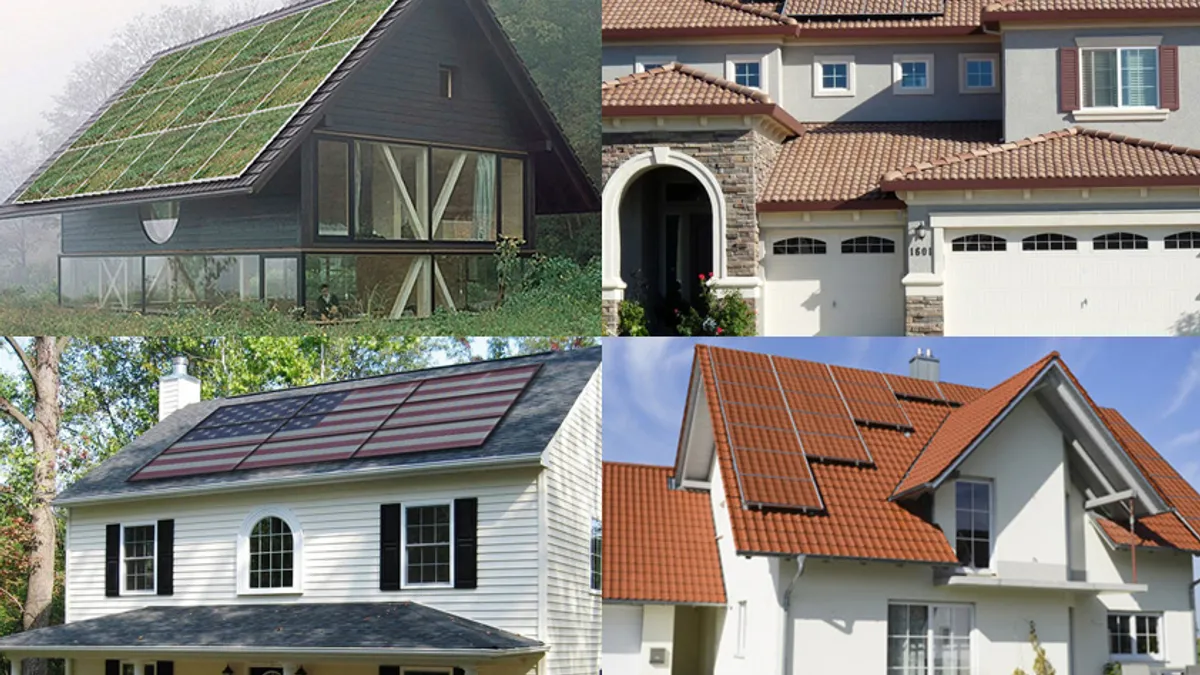Dive Brief:
-
Rooftop photovoltaic systems have long faced the challenge of melding efficacy and aesthetics, with the former usually winning out over the latter. A new startup out of the Massachusetts Institute of Technology is tackling that disparity with a PV panel system that blends into the roof.
-
Sistine Solar’s roof-mounted panels feature a graphic interlayer that can display an image — such as that of roof shingles, grass, a company logo or a flag — without impacting performance.
- The system, called SolarSkin, costs 10% more than a typical PV installation. In December, the company installed its first SolarSkin system on a house in Norwell, MA.
Dive Insight:
Sistine Solar joins the race to make rooftop solar systems more visually appealing — a factor, along with cost, that has been holding back adoption.
Last year, Tesla made waves with its announcement of plans to develop a textured glass solar roofing shingle that, it said, would cost less to manufacture and install than terra-cotta or slate roofs and with the addition of solar generation capacity. The glass tiles will be available in common roof colorways. The announcement followed news from Tesla and SolarCity this past fall concerning its forthcoming integrated solar roof and on-site battery for residential applications.
Tesla isn’t the first company to seek to improve upon the look of rooftop PVs.
In October, Italian company Dyaqua rolled out a line of solar panels whose PV modules are integrated with building materials like tiles, blocks and shingles and then given a finish that emulates clay, stone, wood or concrete but also allows for sunlight penetration.
There were more than 1 million homes in the U.S. with rooftop solar installations in 2016, according to the Solar Energy Industry Association, growth that is as much in response to a growing concern for energy efficiency as it is to tax breaks and other incentives designed to boost the adoption of residential PVs. A new partnership between the Residential Energy Services Network and the Appraisal Institute to include Home Energy Rating System scores in appraisals could help builders and owners finance PV systems in the future, bringing more installations online.
For more housing news, sign up for our daily residential construction newsletter.













